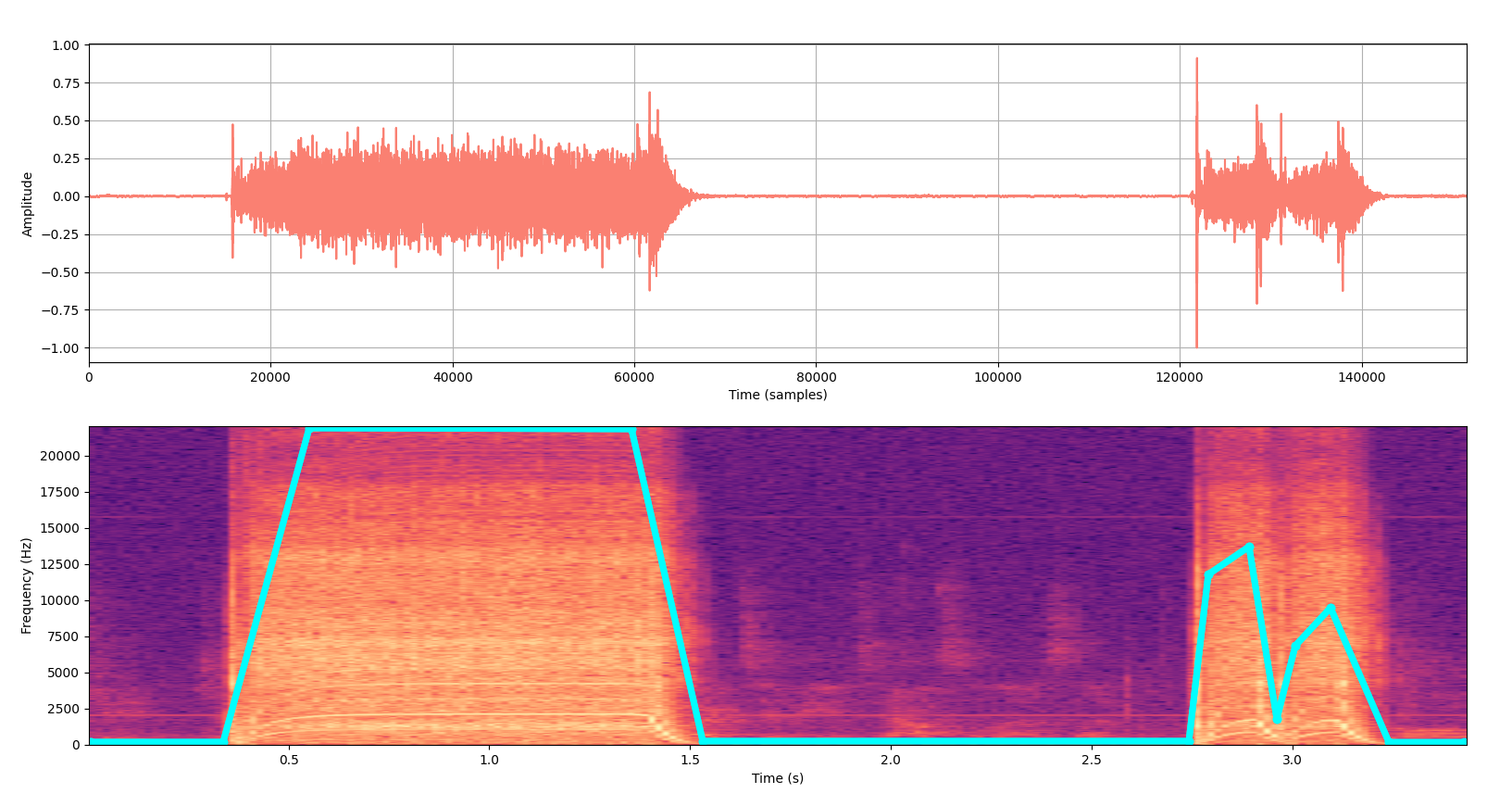Please install the requirements by running:
pip install -r requirements.txt
Please place all the training .wav files inside the same directory.
To train a model just run the commands below depending on the desired control scheme. The training configuration options (batch size, number of filters, training epochs, learning rate, etc.) can be seen by typing:
python train.py --helpThe progress is logged in a trained_models/dataset_name/current_date directory, where dataset_name is taken from the --dataset_path and current_date is the current date and time (to avoid overriding). The directory contains the checkpoints (model, training audio examples, synthesised audio examples) taken during training and a config.pickle file with the training configuration (for inference).
Used to compare NoiseBandNet to the original DDSP noise synthesiser.
python train.py --dataset_path path_to_wav_files_directory --auto_control_params loudness centroidUsed to perform loudness transfer.
python train.py --dataset_path path_to_wav_files_directory --auto_control_params loudnessUsed to control the synthesiser with user-defined control parameters. This is limited to a single audio file.
First, label the training audio by running:
python label_data.py --audio_path path_to_wav_file_directory --audio_name name_of_the_audio_file --output_directory output_directory --feature_name name_of_the_labelled_feature --sampling_rate sampling_rate_of_the_audioThe label_data.py tool will show an image with the training audio waveform at the top and its spectrogram at the bottom. The control parameters are defined by clicking on top of the spectrogram. To allow for a finer control, the right click removes the last added control point. Please see below for an example, where the cyan curve on top of the spectrogram is the user-defined control parameter:
This will create a feature_name.npy file with the control parameters in a output_directory/audio_name directory. To train a model using this control curve, simply run:
python train.py --dataset_path path_to_wav_file_directory --control_params_path output_directory/audio_nameWe provide 3 notebooks with different inference schemes.
The inference_randomisation notebook contains a demo of randomising the predicted amplitudes from the model, including generating stereo signals (Section V-A of the paper).
The inference_loudness_transfer notebook shows how to perform loudness transfer (Section V-B of the paper).
First, an inference control curve can be generated by running:
python inference_create_control_param.py --n_samples length_of_the_control_signal --output_directory control_curve_directory --feature_name name_of_the_control_curveWhich will create a feature_name.npy file with the control parameters in a output_directory directory. The inference_control_param notebook shows how to employ that curve as the input of the synthesiser (section V-C of the paper). Keep in mind that if you trained a model with a single user-defined control curve, the directory should contain only one feature_name.npy inference control vector.
NoiseBandNet uses code snippets from the following repositories: ACIDS DDSP implementation.


